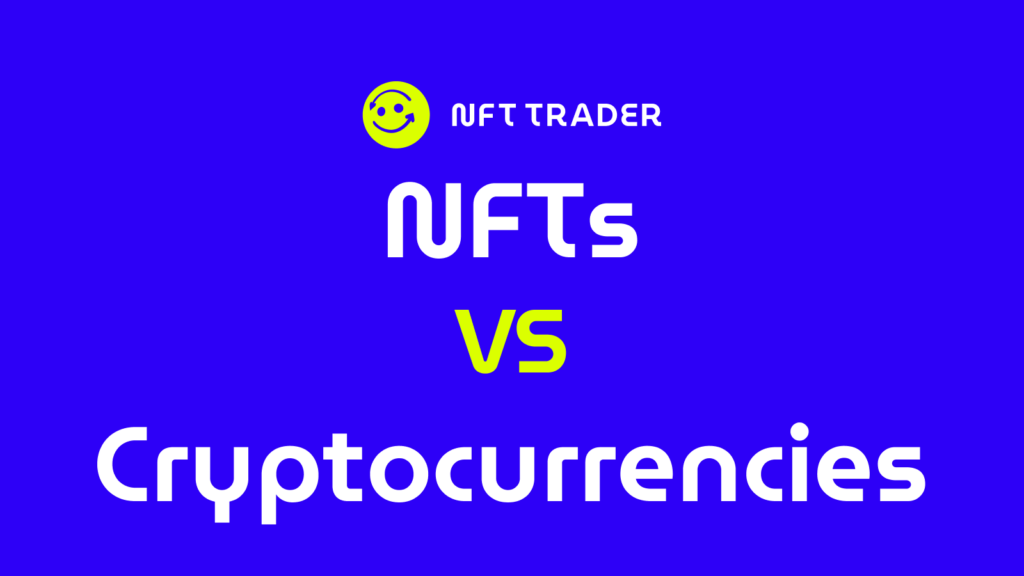NFTs vs Cryptocurrencies: What Sets Them Apart?

The demarcation between NFTs (Non-Fungible Tokens) and Cryptocurrency may appear commonplace to some; however, for an individual external to this domain, these terminologies can be perplexing. Therefore, we aim to furnish a comprehensive elucidation of these terms within this analytical exposition.
Summary:
- What are NFTs?
- What are cryptocurrencies?
- Main differences between cryptocurrencies and NFTs
- Similarities between NFTs and cryptocurrencies
What are NFTs?
Initially, it is imperative to exclude scenarios involving NFTs in the absence of technical proficiency. NFTs can be perceived as distinctive units of information with the capacity to symbolize a wide array of items. These may encompass a corporate document, a tokenized timepiece wherein the physical counterpart is securely housed, or they might manifest as digital collectibles or artworks. Furthermore, NFTs have the potential to serve as tickets, coupons, and various other entities.
Given that the foundational standard for this token consistently remains unchanged, or undergoes only occasional, minor modifications, developers find it more straightforward to seamlessly incorporate them into established systems or into entirely new projects seeking to harness this technology.
Anyways, we’ve explained more clearly what an NFT is in this Guide
What are cryptocurrencies?
To commence, it is imperative to be unequivocal: there exist cryptocurrencies that serve as essential components for the underlying blockchain protocols, such as Bitcoin, Ethereum, and Polygon, for instance. On the other hand, tokens typically operate in conjunction with an on-chain protocol. Let us now delineate the distinctions between the two:
- Native Cryptocurrencies: As previously mentioned, these cryptocurrencies are utilized to manage and fortify the underlying blockchain technology. Bitcoin and Ethereum, for instance, serve as native cryptocurrencies indispensable for the sustenance of their respective blockchains. These cryptocurrencies are dispensed as rewards to the miners, or validators, responsible for processing transactions and maintaining the integrity, security, and decentralization of these blockchains ;
- Tokens: Tokens differentiate themselves from Native Cryptocurrencies in that their value is contingent upon supply and demand dynamics. Typically, tokens find utility within on-chain protocols, such as DAOs, conferring upon their owners a measure of influence in voting proceedings within the DAO. Those tokens could be only stablecoins, which means that their value it’s pegged to a currency, like the USD.
Main differences between cryptocurrencies and NFTs
To begin, it is paramount to understand that NFTs are inherently distinctive. Each NFT possesses its own unique identifier and metadata, which serve as the core representation of the NFT itself. Presently, the most prevalent use cases for NFTs encompass art, collectibles, and in-game assets.
In contrast, the primary use-case for mainstream cryptocurrencies lies in the uniform value shared by all tokens/currencies within the same group. These tokens tend to be more liquid and are typically traded on both centralized exchanges (CEXs) and decentralized exchanges (DEXs). Given their higher liquidity, these assets are more readily exchangeable with counterparties.
Similarities between NFTs and cryptocurrencies
NFTs and cryptocurrencies share some commonalities. Here is a list:
- Ownership: These assets are typically owned by users and protocols, who utilize them according to their specific requirements. For an end user, having a wallet is essential, as it provides a visual representation of these assets. In the case of a cryptocurrency, the user can view their balance. For an NFT, the user should be able to access a visual representation of the asset ;
- Transferability: Both assets can typically be transferred from one wallet to another. This capability is of paramount importance, as it enables decentralized exchanges (DEXs) and NFT marketplaces to manage these transactions seamlessly. It’s important to note that the transferability of these assets generally depends on how the token’s smart contract is coded. For instance, a novel concept is “soul-bound NFTs,” denoting assets that cannot be transferred from one wallet to another ;
- Volatility: Given that these assets can be acquired or sold, they are both subject to high market volatility ;



